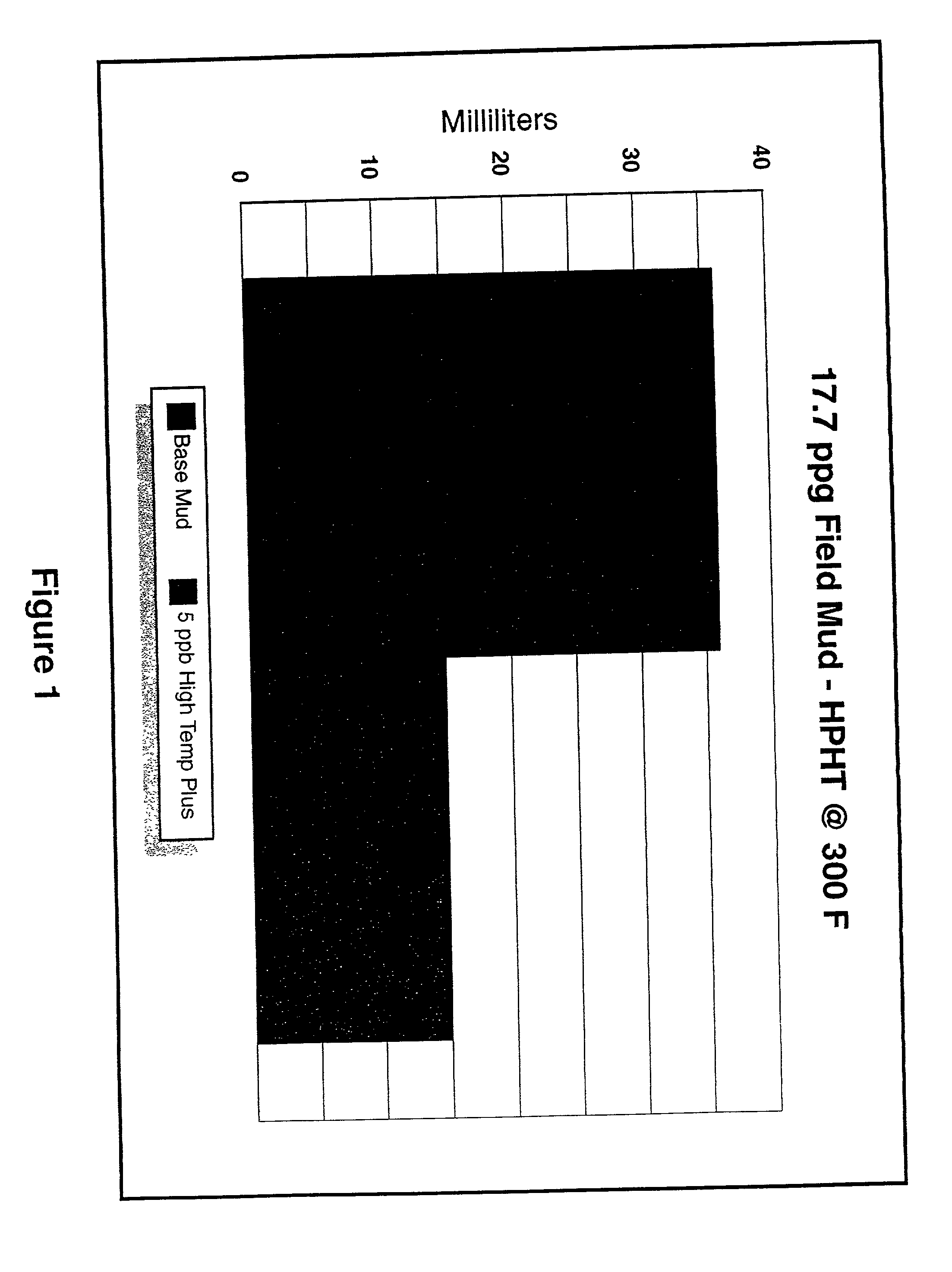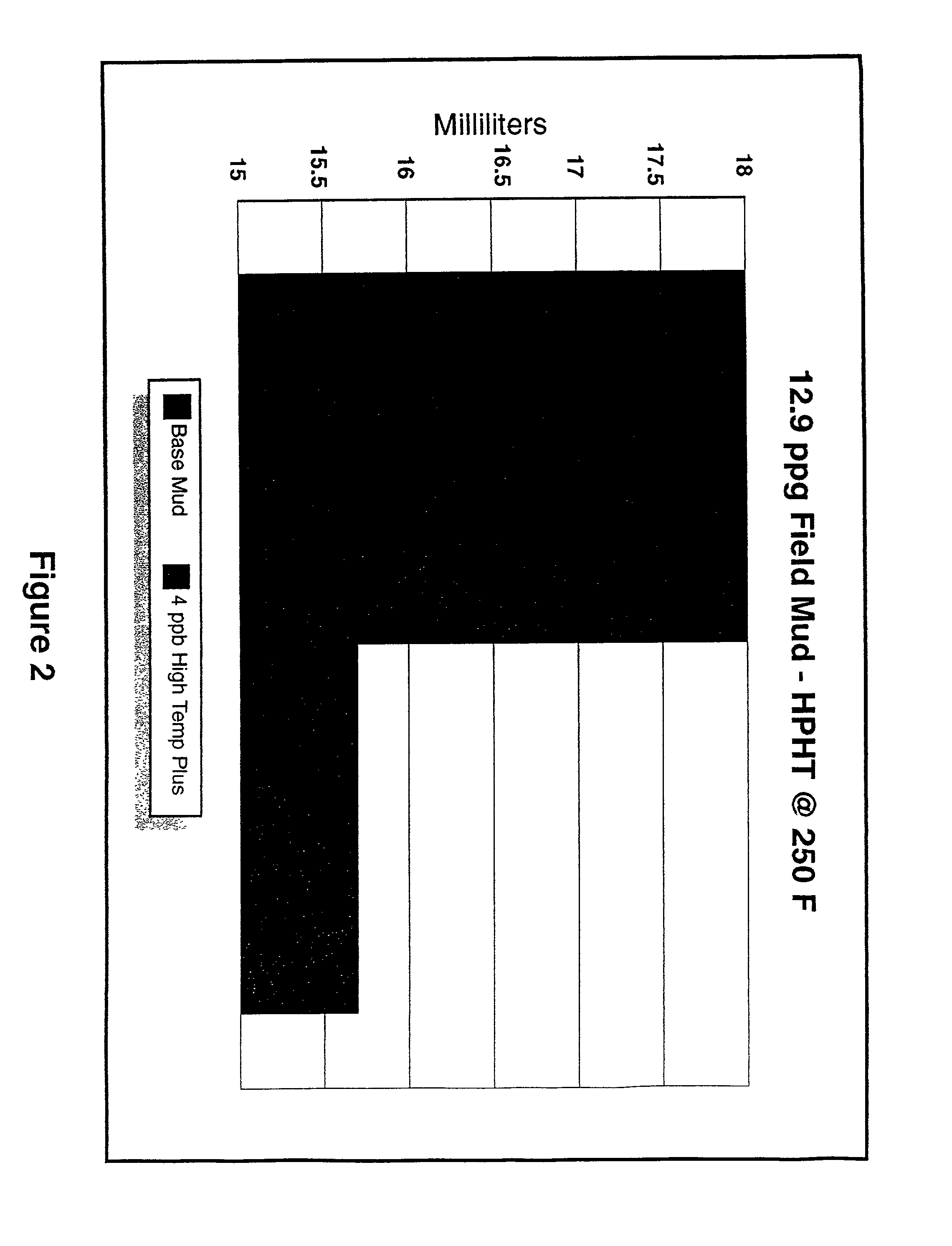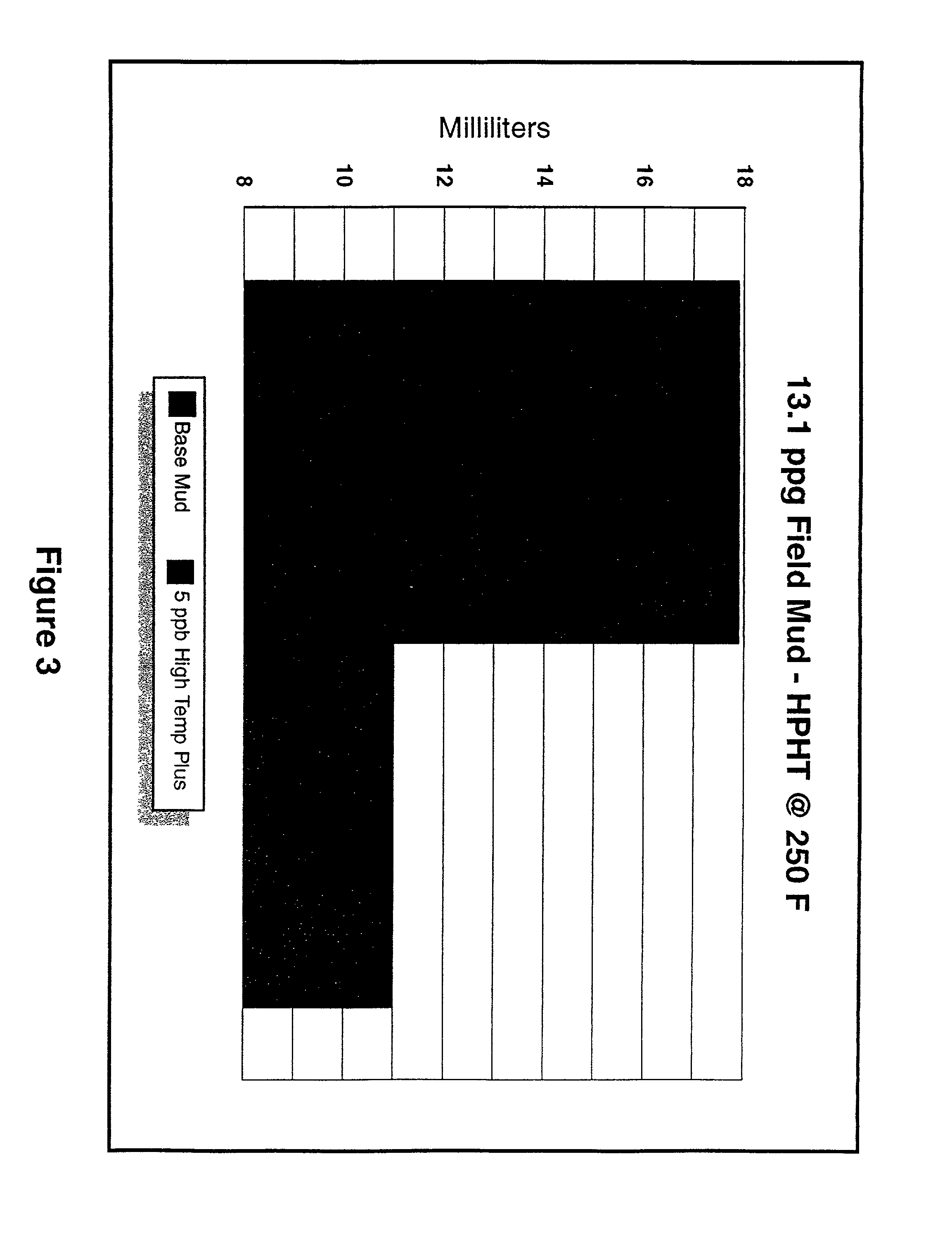High pressure, high temperature (HPHT) fluid loss control aid for drilling fluids
- Summary
- Abstract
- Description
- Claims
- Application Information
AI Technical Summary
Benefits of technology
Problems solved by technology
Method used
Image
Examples
Embodiment Construction
[0064] Combining various uintaite compounds with solubilized lignite and carbon black as described herein produced HPHT fluid loss control aids having different properties depending on the formulation and the drilling fluid used in combination with the loss control aid.
[0065] Evaluation of the HPHT fluid loss control aids followed the procedures given in API Bulletin RP 13B-2 1990 which describes test results using the following abbreviations:
[0066] "PV" denotes plastic viscosity, reported in centipoises (cp);
[0067] "YP" refers to the yield point, measured in 1 b / 100 ft.sup.2, another viscosity characteristic of the drilling fluid;
[0068] "GELS" describe the suspending characteristics and the thixotropic properties of the drilling fluid.
[0069] "HTHP" relates to high temperature high pressure fluid losses measured at 200-350.degree. F. / 500 psi differential and reported as ml / 30 min.
[0070] Using the viscometer described in API Bulletin RP 13B-1, the viscosity of the mud is determined b...
PUM
 Login to View More
Login to View More Abstract
Description
Claims
Application Information
 Login to View More
Login to View More - R&D
- Intellectual Property
- Life Sciences
- Materials
- Tech Scout
- Unparalleled Data Quality
- Higher Quality Content
- 60% Fewer Hallucinations
Browse by: Latest US Patents, China's latest patents, Technical Efficacy Thesaurus, Application Domain, Technology Topic, Popular Technical Reports.
© 2025 PatSnap. All rights reserved.Legal|Privacy policy|Modern Slavery Act Transparency Statement|Sitemap|About US| Contact US: help@patsnap.com



